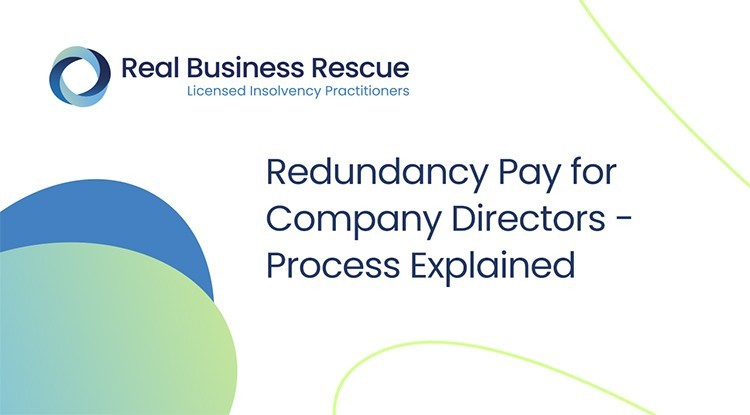Small Business Closing Employee Rights UK: Guaranteeing Fair Redundancy Pay
Small Business Closing Employee Rights UK: Guaranteeing Fair Redundancy Pay
Blog Article
Examining the Interaction In Between Business Redundancy and Business Flexibility for Future Development
In the vibrant landscape these days's organization globe, the elaborate partnership in between business redundancy and organizational versatility arises as an important factor for sustained development and success. Companies usually face the obstacle of striking a delicate equilibrium in between preserving a degree of redundancy to minimize risks and cultivating adaptability to respond quickly to the ever-evolving market demands. This delicate interplay holds the key to not just making it through in unstable times but additionally flourishing in the face of uncertainty. As we discover the multifaceted measurements of this interplay, fascinating insights right into just how companies browse these complexities to lead the means for future development wait for.
Relevance of Firm Redundancy
Company redundancy is a crucial element that enhances business strength and alleviates functional risks. By integrating redundancy actions within the business structure, business can much better withstand unexpected interruptions and changes in business environment. Redundancy works as a calculated barrier, permitting companies to adapt and react efficiently to unexpected obstacles without jeopardizing crucial operations.
One key element of the importance of company redundancy is its duty in making sure continuity throughout times of crisis. When faced with sudden adjustments or emergencies, repetitive systems, resources, or workers can action in to maintain important features and avoid widespread disruptions. This continuity not just safeguards the business's reputation and client trust yet also reduces financial losses and functional downtime.

Techniques for Business Adaptability

Producing adaptable business structures that enable for quick modifications to market characteristics and consumer demands is crucial for remaining affordable in a quickly developing environment. By proactively recognizing prospective disruptions and chances, organizations can proactively thrive and adapt in an ever-changing business landscape.
Harmonizing Redundancy and Flexibility
Achieving a harmonious stability between operational redundancy and business adaptability is paramount in browsing the complexities of a dynamic organization environment. Redundancy within a company gives a safety and security web, guaranteeing continuity and stability in operations. Nevertheless, an extra of redundancy can lead to ineffectiveness and hinder versatility to changing market conditions. On the other hand, organizational versatility permits firms to respond promptly to external disturbances and take new possibilities. Striking the ideal equilibrium in between redundancy and versatility is a delicate process that needs a deep understanding of the organization's goals, sector characteristics, and threat tolerance.
To achieve this balance, companies need to conduct normal assessments of their procedures to determine locations where redundancy is essential for risk mitigation and where versatility can drive innovation and development. Carrying out adaptable frameworks, cultivating a society of continuous understanding and renovation, and urging open communication throughout all degrees of the company are essential techniques to harmonize redundancy and versatility efficiently. By aligning these two vital components, firms can position themselves for sustainable development and success in an ever-changing business landscape.
Situation Studies on Adaptation Success
In checking out circumstances of effective business you can try this out adaptation, it comes to be apparent that the interplay in between operational redundancy and versatility is a defining element in forming resilient services. One compelling study is that of Netflix. Originally a DVD rental service, Netflix showed impressive versatility by transitioning into a streaming platform when digitalization disrupted the industry. By strategically investing in innovation and content creation, Netflix not only thrived however survived in a swiftly advancing market. One more standout instance is Amazon. Beginning as an on the internet bookstore, Amazon constantly adapted its service design, expanding right into diverse markets such as cloud computer and expert system. This versatility allowed Amazon to stay ahead of competitors and meet transforming customer demands. Last but not least, Adobe provides a his explanation notable illustration of effective adaptation. The firm moved from marketing software program licenses to a subscription-based version, making sure repeating profits streams and enhanced customer interaction. These case studies emphasize the importance of functional redundancy coupled with business adaptability in cultivating long-lasting growth and competition.
Building Durability for Future Development
Building strength for future growth calls for a tactical placement of functional processes with market dynamics and emerging trends. Business should adapt to altering atmospheres by cultivating a culture of versatility, advancement, and constant renovation. Strength involves not only recuperating from troubles however additionally proactively preparing for future challenges. One essential facet of building strength is buying robust risk monitoring techniques to minimize potential interruptions. This consists of scenario planning, expanding supply chains, and creating backup prepare for various backups (who pays redundancy money).
In addition, promoting strong partnerships with stakeholders, such as customers, workers, vendors, and the area, is essential for maintaining and weathering uncertainties trust and support throughout rough times. Effective interaction and openness play an important role in building durability, as they aid align assumptions and promote partnership in browsing unpredictabilities.
Furthermore, companies need to focus on understanding and development efforts to upskill staff see post members and outfit them with the needed devices to adjust to changing scenarios. By purchasing their workforce, companies can boost their adaptability and dexterity, eventually reinforcing their resilience for sustainable future growth.
Verdict

In the vibrant landscape of today's organization world, the elaborate relationship in between business redundancy and business flexibility arises as a vital factor for sustained development and success. Firms frequently deal with the challenge of striking a delicate equilibrium between preserving a level of redundancy to mitigate dangers and promoting adaptability to respond quickly to the ever-evolving market needs.To attain this balance, business require to perform regular evaluations of their procedures to determine areas where redundancy is necessary for danger reduction and where flexibility can drive development and development.In verdict, the interaction between firm redundancy and organizational flexibility is vital for future growth. Structure durability via a combination of redundancy and flexibility will ensure that firms are prepared for the challenges of the future.
Report this page